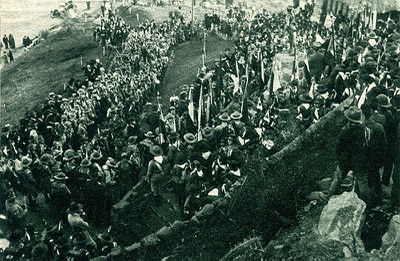
The years from 1915 to 1927 were a decisive period in the history of a prominent, 632-hectare Andean spur called Cerro San Cristóbal, located to the northeast of Santiago’s downtown area. Journalist Alberto Mackenna Subercaseaux, who became governor in 1921, promoted three plans for the transformation of the hill into a public park. Obsessed with the possibility of transforming this deposit of volcanic and subvolcanic rocks into a social catalyst for Santiago, Mackenna Subercaseaux’s rhetoric challenged the prevalent cultural attitudes, economic conditions, and political decision-making by transforming the hill into an emblem of new local and national awareness of the value of outdoor recreation amid the urban fabric.
Romy Hecht is associate professor at the School of Architecture, Universidad Católica de Chile (UC), where she gives courses and research seminars on historical narratives and design theories of nineteenth- and twentieth-century landscapes. Hecht has focused on constructing a comprehensive history of Chile’s landscape projects, particularly in post-independence Santiago. Her work describes how landscape strategies have been shaped by a dynamic relationship between botanical practices, political decisions and economic circumstances giving form to an arboreal culture that has transformed the city.